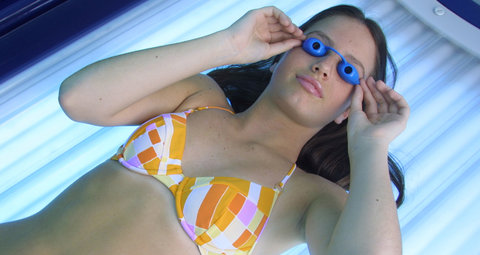UV Radiation Makes Mice (And Humans) Feel Good To The Point Of Addiction
This article is more than 2 years old
 A while back, GFR reported on a study that found the scent of males blocks pain. Namely, proximity to a male researcher, or even clothing worn by a man, heightened the stress level of the rodents, which caused them to produce more corticosterone, which dulls the pain response. Scientists now think that ultraviolet radiation causes a similar response in humans, producing endorphins that block pain and make people feel good. So it seems that our love for sunlight is about a lot more than getting a tan.
A while back, GFR reported on a study that found the scent of males blocks pain. Namely, proximity to a male researcher, or even clothing worn by a man, heightened the stress level of the rodents, which caused them to produce more corticosterone, which dulls the pain response. Scientists now think that ultraviolet radiation causes a similar response in humans, producing endorphins that block pain and make people feel good. So it seems that our love for sunlight is about a lot more than getting a tan.
In a study published in Cell, researchers from Boston’s Brigham and Women’s Hospital and Massachusetts General Hospital did UV radiation experiments on mice. They shaved a bunch of the rodents, and for six weeks let them soak in a moderate amount of UV rays (about 30 minutes a day), measuring their levels of beta-endorphins and their responses to pain. Their beta-endorphins were much higher than those of the mice that weren’t exposed, and they also had a higher resistance to pain. The team also let the mice choose whether to hang out in a brightly lit cage or a dark one. Since mice are nocturnal they generally chose the darkness, but the UV-exposed subjects were all for the light.
Then the scientists administered a drug called Naloxone, which blocks the beta-endorphin caused by UV exposure. Even though the mice were stilled exposed to the same rays, they experienced withdrawal, displaying symptoms such as agitation and shaking. This is the first experiment in which researchers were able to draw a connection between UV exposure and beta-endorphins in the body, as well as evidence about what happens to mice that don’t produce those neural inhibitors. In fact, the side effects of lack of beta-endorphins suggest that mice—and probably a bunch of other creatures, including humans—depend on them. Thus, the implications of the study shed light on why humans are so drawn to the sun, and why, despite all the warnings about the dangers of UV exposure and tanning, we can’t seem to stop sunbathing.
The findings might also provide scientists with insight regarding other addictions, such as to opiates. Beta-endorphins, which essentially make people feel good, function like naturally occurring opiates. The findings have caused some of the researchers to theorize that “perhaps UV-seeking was the original addiction.” Given the dangerous effects of UV radiation, it would be ironic if this turned out to be true. “The concept that we would have a pathway in our skin that is organically guiding us to seek out the most common carcinogen in the world almost seems like a joke,” one of the study authors said.
It’s possible that humans first sought the sun in order to maintain levels of vitamin D, which thousands of years ago would have provided an evolutionary boost. Since then, it appears we’ve become rather addicted to sunlight to feel good, which explains a lot—namely, why people are such assholes in the winter.












